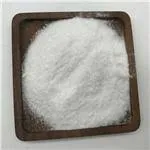Additives Used in Plastics Enhancing Performance and Sustainability
Plastics have become a ubiquitous part of our daily lives, used in everything from packaging to construction materials. However, the versatility of plastics does not solely stem from the synthetic polymers themselves, but also from the various additives that are incorporated into the manufacturing process. These additives play a crucial role in enhancing the performance, durability, and safety of plastic products, addressing multiple functional requirements. This article will explore the types of additives used in plastics, their functions, and the implications for environmental sustainability.
Types of Additives
1. Stabilizers Stabilizers are essential additives that improve the longevity of plastic products by preventing degradation from environmental factors such as UV radiation, heat, and oxidation. Common stabilizers include UV absorbers and antioxidants, which protect the plastic from color fading and material breakdown. For instance, the addition of UV stabilizers such as benzotriazole can significantly extend the lifespan of outdoor plastic products, making them more viable in various applications.
2. Plasticizers Plasticizers are used to enhance the flexibility and workability of plastics, especially in polyvinyl chloride (PVC) formulations. By embedding small molecules between the polymer chains, plasticizers reduce the intermolecular forces, making the material softer and more pliable. While traditional plasticizers like phthalates have been widely used, concerns regarding their health impacts have prompted the search for safer alternatives, such as bio-based plasticizers derived from renewable resources.
3. Fillers Fillers are added to plastics to improve their mechanical properties and reduce production costs. These substances can enhance rigidity, impact strength, and thermal stability. Common fillers include calcium carbonate, talc, and fiberglass. However, the addition of fillers can sometimes affect the aesthetic properties of plastics, necessitating careful selection based on the desired end-use.
4. Flame Retardants In many applications, especially in electronics and construction, flame retardants are critical for enhancing the safety of plastic materials. These additives work by inhibiting ignition and slowing down the combustion process. However, the environmental and health effects of certain flame retardants, such as brominated compounds, have raised concerns, leading to increased regulation in many regions.
additives used in plastics

5. Colorants and Pigments Colorants and pigments are additives that provide aesthetic appeal to plastic products. Beyond mere aesthetics, they can also enhance the visibility of products for safety purposes. Although organic dyes are common, inorganic pigments are often preferred for their stability and resistance to fading under UV light.
6. Antimicrobial Agents With increasing awareness around hygiene, especially in consumer goods, the use of antimicrobial agents in plastics has surged. These additives work to inhibit the growth of bacteria and fungi, making them essential in applications such as medical devices, food packaging, and household products.
Environmental Considerations
While additives are essential for enhancing plastic properties, their environmental impact cannot be overlooked. The persistence of plastics in the environment has prompted a reevaluation of both the materials used and the additives incorporated. Biodegradable additives, derived from natural sources, are being explored as potential solutions to mitigate pollution caused by conventional plastics.
Moreover, the concept of circular economy is increasingly relevant in plastic production. Manufacturers are investigating opportunities to use recycled additives or to develop additives that can enhance the recyclability of plastics. For example, incorporating certain types of fillers can improve the performance of recycled polymers, making them a viable alternative to virgin materials.
Conclusion
Additives are critical in defining the functional characteristics of plastics, influencing everything from durability to safety. However, as the environmental challenges associated with plastic waste continue to grow, there is an urgent need for innovation in both the types of additives used and the development of sustainable practices within the industry. By embracing safer alternatives and incorporating life cycle assessments in the selection of additives, the plastics industry can contribute to a more sustainable future while still meeting the demands of a modern society. In doing so, we move toward a system that respects both human health and the environment, ensuring that plastics remain a useful part of our world, without compromising the planet's future.

